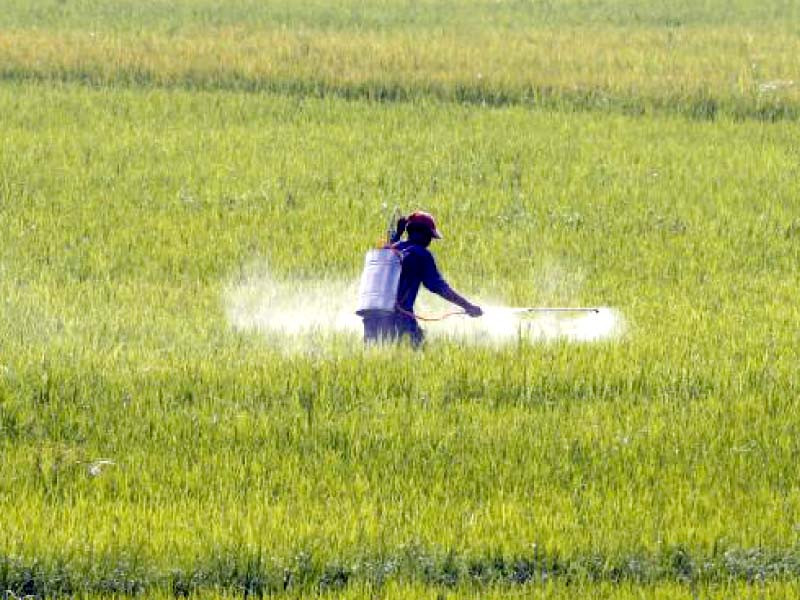
As agricultural countries China and Pakistan are currently facing the same challenges – growing food demand and tight agricultural land jointly threaten food security.
In addition to the three major staple foods in the world, a crop has gradually attracted attention – sorghum.
As an indispensable dry food crop, sorghum is second only to wheat, corn, rice and barley in China in terms of planting area and output.
Agricultural experts call it “the camel of crops” based on its numerous excellent qualities such as resistance to pests and diseases, high temperature, cold, and salinity.
“Sorghum is a multi-purpose crop that can play an important role in food and fodder provision. At a time when the world is facing the dual challenges of the epidemic and food crisis, it is a win-win choice to incorporate this multi-purpose crop into the CPEC cooperation framework and add another layer of guarantee to the food security of China and Pakistan,” which was the consensus shared by experts on the Symposium on Sorghum Industry Development of China and Pakistan organised recently.
According to Dr Shahzor Gul, Assistant Professor, Institute of Food Sciences and Technology, Sindh Agriculture University, Pakistan, as the climatic conditions are excellent for sorghum production and emerging water shortage has necessitated the production of sorghum on a wide scale, this cash crop means the most affordable option.
“In Pakistan, about 5.4 tonnes of sorghum is produced per hectare, more than wheat and rice, which have 3 and 2.2 tonnes per hectare, respectively. Meanwhile, because wheat is mainly a winter crop and sorghum is primarily a summer crop, demand for sorghum is significantly lower, and there is no direct competition,” Gul told CEN.
However, he pointed out that sorghum yields in Pakistan are still meagre due to the lack of better cultivators, an insufficient plant population, unscientific fertiliser application, lack of weed control techniques and water conservation procedures. In addition, Gul indicated that the consumption pattern of sorghum is quite traditional, and it is not available as a commercially processed food in the Pakistani market.
“This is mainly due to the lack of processing technologies and availability of machinery. And sorghum has not been used in our beverage and baking food industry due to a variety of factors including lack of awareness and taste.
“There are not much sorghum grain processing plants in Pakistan. This industry holds immense potential to offer employment to hundreds of thousands people.” Similar views are echoed by Dr Shahzad Sabir from the Punjab Agriculture Department. “Punjab and Sindh are the major sorghum producing provinces of Pakistan, contributing 47% and 26% respectively of the total,” he said.
“On the other hand, in 2019, we exported $23,500 in sorghum, making Pakistan the 53rd largest exporter of sorghum in the world. In the same year, sorghum was the 91st most exported product in Pakistan. Obviously, it is far from meeting expectations, especially in the face of growing global food crisis. Countless opportunities are waiting for us to discover together.”
“In 2020-21, we have carried out planting trials of more than 10 sorghum varieties in Pakistan and achieved preliminary results. Of these, five varieties – 01, 02, 03, 04, and 12 – performed better,” said Yuan Guobao, Vice Chairman of the Council and Chairman of the Committee of Agricultural Experts at the NEXT Federation, in an exclusive interview with CEN.
“The tannin content of domestically grown sorghum is generally around 1.3% to 1.6%, however, according to trial data, benefiting from local excellent light and temperature conditions, the tannin number can climb up to 2.3%. Given that the important role of tannin in food processing and industrial production, we can promote the cultivation of these varieties in Pakistan, and then ship them back to China for further processing.”
At the symposium a few days ago, Yuan not only systematically introduced the preliminary results of planting trials, but also pointed out the multiple economic benefits brought by possible large-scale planting in the future.
“The superior drought, barren and saline-alkaline tolerance of Chinese hybrid sorghum varieties makes it a good choice for Pakistan’s water-deficient and saline-alkali areas.
“Secondly, Pakistan has a vast rice-growing area. In some areas in the south near the Indian Ocean, after rice is harvested, sorghum can be planted in autumn and winter, thus the income of local farmers can be increased by crop rotation. If the planting area can be expanded in the future, the offshore area means that our ships will be more convenient to transport the processed sorghum and save transportation costs. Beyond doubt, it is an excellent model of cooperation with multiple economic benefits, increasing Pakistan’s foreign exchange effectively.”
According to Yuan, if large-scale planting of China’s dominant varieties can be realised in Pakistan, it is conservatively estimated that the local production will increase by about 50%.
Even better, the high tannin content in sorghum means this kind of strong-smelling and astringent chemical has natural resistance to birds and insects. Similar to the pest control effect of garlic, it is of great benefit to the effective control of insect attack.
It is just a tip of the iceberg of opportunities for Pakistan’s sorghum industry. Yuan mentioned that China implements active quota management on the import of rice, corn and wheat. Sorghum is under non-import quota management and only needs a bilateral quarantine agreement for import.
According to statistics released by the General Administration of Customs of China, from January to December 2021, China’s sorghum import volume was 9.42 million tons, up 4.61 million tons or 95.8% compared with 2020.
The import amount was $3.027 billion, an increase of $1.871 billion or 161.9% compared with 2020.
Based on the planting, experts from China and Pakistan agreed that it is crucial to further develop downstream deep processing industries and create more employment opportunities in the future.
Although imports have surged, processed products have not been included. “If agricultural joint ventures are established in countries along the Belt and Road, subsidies will be provided to processing lines, which will benefit the sorghum processing industry,” Yuan told CEN.
Dr Shahzor Gul specifically stated, “Sorghum could be processed into bakery products, puffed food, beverages, porridge and so on. And introduction of new technologies can remove the constraints of traditional processing methods, at the same time improve the nutrient content and shelf-life of products. We are blessed with a wide scope for cooperation.”
At present, the blueprint of China-Pakistan sorghum cooperation has drawn a strong first stroke. “Our first step, the sorghum planting training programme for Pakistani students is progressing smoothly, with the high-quality seed sources as the top priority. People engaged in agricultural science often say that ‘seeds are the chips of agriculture’, and I believe that the day when China-Pakistan sorghum cooperation bear fruit is not too far away,” Yuan concluded confidently.
The article originally appeared on the China Economic Net
Published in The Express Tribune, April 18th, 2022.
Like Business on Facebook, follow @TribuneBiz on Twitter to stay informed and join in the conversation.


1736942026-0/fizza-(33)1736942026-0-165x106.webp)


1736941045-0/fizza-(32)1736941045-0-165x106.webp)






1732012115-0/Untitled-design-(14)1732012115-0-270x192.webp)
1736844405-0/Express-Tribune-(2)1736844405-0-270x192.webp)










COMMENTS (4)
Comments are moderated and generally will be posted if they are on-topic and not abusive.
For more information, please see our Comments FAQ